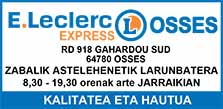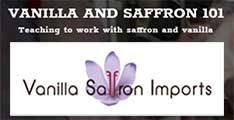Marisa D'Vari. The Pintxos (tapas) bars along the winding streets are open, displaying colorful bite-sized snacks featuring octopus, clams, shrimp, and other treats from the sea.
And what better wine to enjoy with seafood than the traditional local wine, Txakoli.
The Story of Txakoli
Txakoli (also called Txakolina, or Chacoli) is the traditional wine of the Basque region in northern Spain. It is a cool, chilly region characterized by mists, rain, and verdant green hillside vineyards. Many of the vineyards overlook the tumultuous Cantabrian Sea.
The region is characterized by small family grape growers, who struggle for ripeness in this marginal climate as well as the survival of their own fiercely independent Basque culture. Until recently, most of Txakoli wine was consumed within the region.
The success of Michelin-rated chefs from the Basque region, combined with the nascent rise of sommeliers’ growing interest in obscure native grape varieties, are partly responsible for Txacoli’s slowly growing popularity.
It is only in 1989 that the Basque town of Getaria was given its Denominación de Origen (DO), with the Bizkaiko Txakolina DO created in 1994 and the newest, smallest, and most inland Arabako Txakolina DO generated in 2001.
Txakoli: What Makes It So Unique?
The white grape used to form the majority of this wine is Hondarrabi Zuri. Different local grapes are allowed in the blend, depending on the laws of that specific appellation.
And now many producers are beginning to make a rosé Txakoli wine, typically made from the white Hondarrabi Zuri and the red Hondarrabi Beltza grape.
Aside from the pronunciation of its exotic name, Txakoli is unique for several reasons. First is the manner in which the wine is served. By Basque tradition, the wine is poured into tall, flat-bottomed glasses from 8 to 10 inches in the air.
This action agitates the wine, enhancing Txakoli’s youthful effervescence. Of course, the way in which Txakoli is poured also makes for a great story. And it boosts the wine’s charisma.
In terms of structure, Txakoli has natural acidity from the high elevation of the hillside vineyards. Combined with its moderate alcohol (under 11.5% abv) and light body, it is a wine that pairs magically with seafood and fish.
You will often find a delicious salty minerality in this wine, depending on how close the vineyards are located to the sea.
Location, altitude of the vineyards, and proximity to the sea all play their role in the flavor of the wine. Other factors include the characteristics of the vintage, the mix of local varieties used in the blend, and the “house style” of the producer.
In addition to the rosé version, some producers are experimenting with letting the wine age on its lees (that is, with spent yeast cells, left over from the fermentation) to increase its texture and add to its complexity. Some producers are also experimenting with aging in Acacia wood.
Buying Txakoli
Txakoli in the USA is usually priced between $15 and $20. It is packaged in the region’s traditional tall green-hued bottle. Most closures are screwcaps to retain freshness.
The Basque people drink this wine all year, yet spring and summer are possibly the best times to enjoy this wine with the fresh produce and your local seafood of the season.



 Enviar a un amigo
Enviar a un amigo Añadir comentario
Añadir comentario








